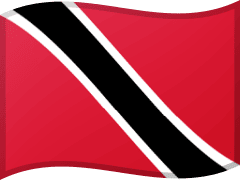Websites and social networks
International
- FrogLog is the world’s #1 amphibian conservation digital magazine
- Amphibian Survival Alliance (ASA)


 has built a committed global alliance of Partners, dedicated to developing a better world for amphibians through coordinated conservation action.
has built a committed global alliance of Partners, dedicated to developing a better world for amphibians through coordinated conservation action. - Amphibian Specialist Group (ASG)

 provides the scientific foundation to inform effective amphibian conservation action around the world.
provides the scientific foundation to inform effective amphibian conservation action around the world. - Amphibian Ark


 was created in 2007 to carry out the ex situ components of the Amphibian Specialist Group’s Amphibian Conservation Action Plan (PDF File).
was created in 2007 to carry out the ex situ components of the Amphibian Specialist Group’s Amphibian Conservation Action Plan (PDF File). - AmphibiaWeb aims to establish a knowledge-base for all amphibians in the world. New amphibian species are added here. Current number of amphibian species: 8,301 (Apr 1, 2021)
- VipersGarden herpetological database contains 4623 pictures, representing 964 (94.4%) of total 1021 species; 709 (69.4%) NCBI Taxon ID’s (+ ssp., if available), and 16886 files related literature.
- SAVE THE FROGS!





 is the world’s most effective amphibian conservation organization.
is the world’s most effective amphibian conservation organization.
- Save The Frogs Day takes place annually on the last Saturday of April.
- Research and Analysis Network for Neotropical Amphibians‘ (RANA) mission is to promote understanding about amphibian population declines through collaborative research in the Neotropics.
- The IUCN Red List of Threatened Species

 the world’s most comprehensive information source on the global extinction risk status of animal, fungus and plant species.
the world’s most comprehensive information source on the global extinction risk status of animal, fungus and plant species. - Association of Reptile and Amphibian Veterinarians (ARAV)

 is a globally recognized leader promoting scientifically based responsible reptile and amphibian medicine and surgery, research, conservation, and pet ownership.
is a globally recognized leader promoting scientifically based responsible reptile and amphibian medicine and surgery, research, conservation, and pet ownership. - FROGS & FRIENDS



 hat sich zum Ziel gesetzt, den Amphibien eine Stimme zu geben. Sie sind weltweit und in den vielfältigsten Projekten aktiv.
hat sich zum Ziel gesetzt, den Amphibien eine Stimme zu geben. Sie sind weltweit und in den vielfältigsten Projekten aktiv.
- Bombina

 is a page about Fire-bellied toads. Here you will see and find pictures, posters, videos and useful information about all species of the genus Bombina.
is a page about Fire-bellied toads. Here you will see and find pictures, posters, videos and useful information about all species of the genus Bombina.
- “Dorsal and ventral side of various toads and their hybrids” (PDF) extracted pages from a lengthy article about biology, keeping and breeding Bombina species as PDF-Version. It’s German language only. “Unken, Bombina sp., Biologie und Zucht” (PDF)
- Turtle Foundation



 is represented in the United States, Germany, Switzerland, Liechtenstein, and Cape Verde. It is an initiative for the protection of the endangered sea turtles.
is represented in the United States, Germany, Switzerland, Liechtenstein, and Cape Verde. It is an initiative for the protection of the endangered sea turtles. - The Reptile Database provides a catalogue of all living reptile species and their classification. The database covers all living snakes, lizards, turtles, amphisbaenians, tuataras, and crocodiles. Currently there are more than 10,000 species including another 2,800 subspecies.
- HerpDigest provides a free Electronic Newsletter Reporting the Latest News on Reptile and Amphibian Science and Conservation.
- Naturefriends



 are amongst the largest non-governmental organisations around the globe. 350,000 members are active in local groups/sections and are represented by regional, federal and national associations.
are amongst the largest non-governmental organisations around the globe. 350,000 members are active in local groups/sections and are represented by regional, federal and national associations. - Observation.org

 is the largest nature observation platform in Europe
is the largest nature observation platform in Europe - World Congress of Herpetology: International Herpetological Society
- Society for the Study of Amphibians and Reptiles (SSAR)

 is a not-for-profit organization established to advance research, conservation, and education concerning amphibians and reptiles. It is the largest international herpetological society.
is a not-for-profit organization established to advance research, conservation, and education concerning amphibians and reptiles. It is the largest international herpetological society. - Herpetological Conservation & Biology
 is an open-access international journal that publishes original peer-reviewed research, reviews, and perspectives on the ecology, natural history, management, and conservation biology of amphibians and reptiles.
is an open-access international journal that publishes original peer-reviewed research, reviews, and perspectives on the ecology, natural history, management, and conservation biology of amphibians and reptiles. - Society for the Study of Amphibians and Reptiles (SSAR)

 is a not-for-profit organization established to advance research, conservation, and education concerning amphibians and reptiles, was founded in 1958. It is the largest international herpetological society.
is a not-for-profit organization established to advance research, conservation, and education concerning amphibians and reptiles, was founded in 1958. It is the largest international herpetological society. - iNaturalist ist eine gemeinsame Initiative der “California Academy of Sciences” und der “National Geographic Society”.
- iNaturalist App ist eine der beliebtesten Natur-Apps der Welt. Die App hilft Ihnen bei der Pflanzen- und Tierbestimmung. Mit ihr kannst du Pflanzen und Tiere in deiner Umgebung identifizieren. Werde Teil einer Gemeinschaft von über 400.000 Wissenschaftlern und Naturforschern, die dir helfen können, noch mehr über die Natur zu erfahren! Darüber hinaus stellst du durch das Melden und Teilen deiner Beobachtungen Daten in Forschungsqualität für Wissenschaftler zur Verfügung.
- Über 75 Millionen Beobachtungen von über 340’000 Arten weltweit und über 200’000 Freiwillige, die bei der Artbestimmung helfen. Suche hier nach der Art (Species) oder der Region (Location). Die Tiernamen können auch in Deutsch eingegeben werden.
- Partners in Amphibian and Reptile Conservation (PARC)


 is an inclusive partnership dedicated to the conservation of the herpetofauna–reptiles and amphibians–and their habitats. Our membership includes individuals from state and federal agencies, conservation organizations, museums, pet trade industry, nature centers, zoos, energy industry, universities, herpetological organizations, research laboratories, forest industries, and environmental consultants. The diversity of our membership makes PARC the most comprehensive conservation effort ever undertaken for amphibians and reptiles.
is an inclusive partnership dedicated to the conservation of the herpetofauna–reptiles and amphibians–and their habitats. Our membership includes individuals from state and federal agencies, conservation organizations, museums, pet trade industry, nature centers, zoos, energy industry, universities, herpetological organizations, research laboratories, forest industries, and environmental consultants. The diversity of our membership makes PARC the most comprehensive conservation effort ever undertaken for amphibians and reptiles. - The Herpetologists’ League


 , established in 1946, is an international organization of people devoted to studying herpetology — the biology of amphibians and reptiles. HL publishes two scholarly journals — the quarterly Herpetologica, which contains original research papers and essays, and the annual supplement Herpetological Monographs, which contains lengthy research articles, syntheses, and special symposia.
, established in 1946, is an international organization of people devoted to studying herpetology — the biology of amphibians and reptiles. HL publishes two scholarly journals — the quarterly Herpetologica, which contains original research papers and essays, and the annual supplement Herpetological Monographs, which contains lengthy research articles, syntheses, and special symposia. - ACO Wildlife Protection Systems





Europe
- Societas Europaea Herpetologica (SEH)
 was founded in 1979 and is a herpetological society with nearly 350 members from most of the European countries and elsewhere.
was founded in 1979 and is a herpetological society with nearly 350 members from most of the European countries and elsewhere. - BsalEurope is a website commissioned by the European Commission to fight Bsal in Europe.
- Herpsafari is a website about the amphibians and reptiles of Europe.
- Herpetofauna of Europe is a website by Jeroen Speybroeck

 on amphibians and reptiles of Europe and the world.
on amphibians and reptiles of Europe and the world. - European Pond Conservation Network’s (EPCN)

 objective is to promote conservation of ponds and their biodiversity in a changing European landscape.
objective is to promote conservation of ponds and their biodiversity in a changing European landscape.
Principality of Liechtenstein 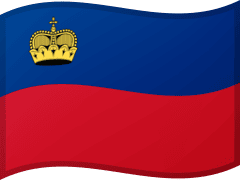
- Liechtensteinische Gesellschaft für Umweltschutz (LGU)
 steht ein für einen schonenden Umgang mit der Natur.
steht ein für einen schonenden Umgang mit der Natur. - Amt für Umwelt der Landesverwaltung Fürstentum Liechstenstein nimmt gerne Nachweise von wandernden Amphibien und Laichgewässern entgegen.
- Amphibienmonitoring in Liechtenstein 1995-2010 (PDF File) herausgegeben durch die Landesverwaltung Fürstentum Liechstenstein
- Liechtensteinischer Ornithologischer Landesverband (LOV) ist die Dachorganisation aller fünf in Liechtenstein tätigen Ornithologische Vereine.
- Botanisch-Zoologische Gesellschaft – Liechtenstein-Sarganserland-Werdenberg e.V. (BZG)
- [Die Arbeitsgruppe für Amphibien- und Reptilienschutz der BZG wurde leider zwischenzeitlich aufgelöst.]
- CIPRA Liechtenstein




 ist eine Mitgliedsorganisationen und setzt sich für Natur und Umwelt ein
ist eine Mitgliedsorganisationen und setzt sich für Natur und Umwelt ein - Tierschutzverein Liechtenstein
Switzerland 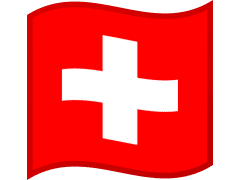
- karch
 ist die Koordinationsstelle für Amphibien- & Reptilienschutz in der Schweiz.
ist die Koordinationsstelle für Amphibien- & Reptilienschutz in der Schweiz. - Webfauna — CENTRE SUISSE DE CARTOGRAPHIE DE LA FAUNE
- Pro Natura


 ist die älteste und mit rund 170’000 Mitgliedern und 25’000 treuen Gönnerinnen und Gönnern größte Naturschutzorganisation der Schweiz
ist die älteste und mit rund 170’000 Mitgliedern und 25’000 treuen Gönnerinnen und Gönnern größte Naturschutzorganisation der Schweiz - BirdLife Schweiz



 ist mit 67’000 Mitgliedern eine der grössten Naturschutzorganisationen der Schweiz.
ist mit 67’000 Mitgliedern eine der grössten Naturschutzorganisationen der Schweiz.
- Das Netzwerk vereint 440 lokale Naturschutzvereine, 19 Kantonalverbände und zwei Landesorganisationen und 70 Jugendgruppen. Deren Mitglieder sind alle auch Mitglieder bei BirdLife Schweiz.
- Froschnetz.ch hat ein sehr beliebtes Amphibienforum.
- Toads on Roads – Amphibienschutz
 will informieren, vernetzen und neue freiwillige Helfer gewinnen, um den Schutz der bedrohten Tierarten in der Region Basel zu verstärken!
will informieren, vernetzen und neue freiwillige Helfer gewinnen, um den Schutz der bedrohten Tierarten in der Region Basel zu verstärken! - DGHT Schweiz (Landesgruppe Schweiz der Deutschen Gesellschaft für Herpetologie und Terrarien-kunde) ist die offizielle Vertretung aller Schweizer Mitglieder der DGHT.
- sara-ch (Sachkunde Reptilien Amphibien Schweiz) ist ein Verein, der von den Mitgliedern der Sachkundeschulung der DGHT Schweiz gegründet wurde.
- DGHT Zürich
 ist der größte Herpetologie- und Terrarienverein der Schweiz. Am letzten Montag im Monat um 20 h im Zoo Zürich gibt es jeweils ein Weiterbildungsabend mit einem Fachvortrag über Amphibien und/oder Reptilien.
ist der größte Herpetologie- und Terrarienverein der Schweiz. Am letzten Montag im Monat um 20 h im Zoo Zürich gibt es jeweils ein Weiterbildungsabend mit einem Fachvortrag über Amphibien und/oder Reptilien. - DGHT-Stadtgruppe Winterthur
- DGHT-Regionalgruppe ZENTRALSCHWEIZ
- DGHT-Stadtgruppe Bern
- Reptilien Auffangstation


 mit Hauptsitz ist in Herisau. Seit der Gründung 2019 sind einige Pflegestellen dazu gekommen. Mittlerweile gibt es noch Anlaufstellen in Thun, Basel, Appenzell und Zürich.
mit Hauptsitz ist in Herisau. Seit der Gründung 2019 sind einige Pflegestellen dazu gekommen. Mittlerweile gibt es noch Anlaufstellen in Thun, Basel, Appenzell und Zürich. - Schildkröten-Interessengemeinschaft Schweiz (SIGS)
 ist ein Verein, der sich für das Wohl der Schildkröten in der freien Natur und in menschlicher Obhut einsetzt.
ist ein Verein, der sich für das Wohl der Schildkröten in der freien Natur und in menschlicher Obhut einsetzt. - Naturschutz.ch


 ist das Schweizer Portal für Natur- und Umweltschutz.
ist das Schweizer Portal für Natur- und Umweltschutz. - Aqua Viva

 kämpft seit 1960 für den Schutz und die Renaturierung der heimischen Gewässerlebensräume. Aqua Viva begeistert Kinder, Jugendliche und Erwachsene für das Thema Wasser und vermittelt an Bächen, Flüssen und Seen die Bedeutung und Faszination dieser einzigartigen Lebensräume.
kämpft seit 1960 für den Schutz und die Renaturierung der heimischen Gewässerlebensräume. Aqua Viva begeistert Kinder, Jugendliche und Erwachsene für das Thema Wasser und vermittelt an Bächen, Flüssen und Seen die Bedeutung und Faszination dieser einzigartigen Lebensräume. - Wildtier Schweiz ist ein gemeinnütziger Verein, der das wildtierbiologische Wissen und das Verständnis für ökologische Zusammenhänge fördert. Der Schwerpunkt liegt bei Säugetieren.
- Artenschutz Schweiz war ein gemeinnütziger Verein im Sinne der Artikel 60ff des Schweizerischen Zivilgesetzbuchs, mit Sitz in Olten. Der Verein wurde im August 2013 aufgelöst, die von ihm aufgebaute und betriebene Homepage wurde am 15.August 2013 an den Verein Naturwerk übergeben.
- Tierrrettungsdienst

 24h-Notfallzentrale: 044 211 22 22
24h-Notfallzentrale: 044 211 22 22 - Schweizer Tierschutz (STS)

 ist der Tierschutz Dachverband der Schweiz. STS hat während der Amphibienlaichzeit Plakatwerbung für die Lurchen gemacht um die Autofahrer zu sensibilisieren.
ist der Tierschutz Dachverband der Schweiz. STS hat während der Amphibienlaichzeit Plakatwerbung für die Lurchen gemacht um die Autofahrer zu sensibilisieren.
- Anbietern mobiler und dauerhafter Amphibienschutzsysteme (Amphibientunnels):
- Mabilec Katalog (Amphibienschutz Typ Maibach aus Schweizer Produktion)
- ACO AG Schweiz

 [Nicht alle Amphibienschutz Artikel der ACO AG Deutschland verfügbar!]
[Nicht alle Amphibienschutz Artikel der ACO AG Deutschland verfügbar!]
- Anbietern mobiler Amphibienschutzsysteme (Amphibienzäune):
Austria 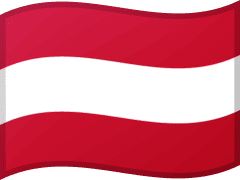
- Österreichische Gesellschaft für Herpetologie (ÖGH) ist ein gemeinnütziger, nicht gewinnorientierter Verein zur Förderung aller Teilbereiche der Herpetologie. Er unterstützt wissenschaftliche Forschungsarbeiten auf diesem Gebiet und setzt sich aktiv für den Schutz der Amphibien und Reptilien sowie ihrer Lebensräume ein.
- Herpetofauna.at hat ein gutes Online Forum für Amphibien und Reptilien Freunde.
- Naturschutzbund Österreich
 ist die größte Naturschutzorganisation Österreichs mit föderaler Struktur und besteht aus neun Landesgruppen (Burgenland
ist die größte Naturschutzorganisation Österreichs mit föderaler Struktur und besteht aus neun Landesgruppen (Burgenland  , Kärnten, Niederösterreich
, Kärnten, Niederösterreich  , Oberösterreich
, Oberösterreich  , Salzburg, Steiermark
, Salzburg, Steiermark  , Tirol, Vorarlberg
, Tirol, Vorarlberg  , Wien
, Wien  ) mit Regionalgruppen und der Naturschutzju-gend.
) mit Regionalgruppen und der Naturschutzju-gend. - Naturfreunde Österreich



 sind mit ihren rund 160.000 Mitgliedern eine der größten und bedeutendsten Freizeit- und Naturschutzorganisationen des Landes. Es gibt 460 Ortsgruppen und neun Landesorganisationen (Burgenland
sind mit ihren rund 160.000 Mitgliedern eine der größten und bedeutendsten Freizeit- und Naturschutzorganisationen des Landes. Es gibt 460 Ortsgruppen und neun Landesorganisationen (Burgenland  , Kärnten
, Kärnten 
 , Niederösterreich
, Niederösterreich  , Oberösterreich, Salzburg
, Oberösterreich, Salzburg  , Steiermark
, Steiermark 
 , Tirol
, Tirol 
 , Vorarlberg
, Vorarlberg  , Wien
, Wien 

 ).
). - noe-amphibienschutz.at eine Webseite des gemeinsamen Projekt des Naturschutzbundes NÖ und dem Land Niederösterreich für den «Amphibienschutz an Straßen in NÖ».
- BetreuerInnen für Amphibienstrecken in Niederösterreich gesucht!
- Österreichischer Tierschutzverein


 kümmert sich um schutzbedürftige Tiere, sorgen für ihre Sicherheit und Pflege, nehmen sie auf und vermitteln ihnen ein neues Zuhause. Das Team der Tierrettung ist Tag und Nacht für in Not geratene Tiere im Einsatz.
kümmert sich um schutzbedürftige Tiere, sorgen für ihre Sicherheit und Pflege, nehmen sie auf und vermitteln ihnen ein neues Zuhause. Das Team der Tierrettung ist Tag und Nacht für in Not geratene Tiere im Einsatz. - Herpetologische Arbeitsgemeinschaft des Hauses der Natur in Salzburg (HerpAG Salzburg) wurde 1989 gegründet und beschäftigt sich seither mit der Biologie und dem Schutz heimischer Amphibien und Reptilien.
- Amt der Tiroler Landesregierung & Antragsformular auf Förderung einer Weiderost-Ausstiegshilfe für Amphibien
- Reptilien- u. Amphibienschutz Peter Ritzinger jun.
 bietet Aufklärung, Beratung, Soforthilfe bei Problemen mit heimischen Reptilien u. Amphibien (wie z.B.: Schlange im Garten, Keller, Gartenhütte, usw.) und Hilfe bei entkommenen Haustieren (Schlangen, Echsen, Schildkröten, …) sowie ist eine Fund- u. Sichtungsmeldestelle für heimische Reptilien und Amphibien.
bietet Aufklärung, Beratung, Soforthilfe bei Problemen mit heimischen Reptilien u. Amphibien (wie z.B.: Schlange im Garten, Keller, Gartenhütte, usw.) und Hilfe bei entkommenen Haustieren (Schlangen, Echsen, Schildkröten, …) sowie ist eine Fund- u. Sichtungsmeldestelle für heimische Reptilien und Amphibien. - Arge NATURSCHUTZ ist ein gemeinnütziger Naturschutzverein zur Sicherung, Entwicklung und Förderung des Naturschutzes im Bundesland Kärnten und Österreich.Helfen Sie bei der Betreuung einer Amphibienwanderstrecke in Ihrer Nähe mit! Fragen Sie bei uns an!
- Naturschutzanwaltschaft vertritt in Vorarlberg die Interessen der Natur und der Landschaft, vor allem in Verfahren nach dem Naturschutzgesetz.
- Salzburg fairantworten
 ist eine Plattform, die namhafte heimische Vereine versammelt und gemeinsam für den Erhalt der heimatlichen Natur und Umwelt kämpft.
ist eine Plattform, die namhafte heimische Vereine versammelt und gemeinsam für den Erhalt der heimatlichen Natur und Umwelt kämpft. - Roadkill

 möchte einen Überblick schaffen, wo welche Tiere überfahren werden und welche Gründe es dafür geben könnte. Mit Ihren Meldungen versuchen wir Hotspots zu identifizieren und diese gemeinsam mit unseren Partnern zu entschärfen.
möchte einen Überblick schaffen, wo welche Tiere überfahren werden und welche Gründe es dafür geben könnte. Mit Ihren Meldungen versuchen wir Hotspots zu identifizieren und diese gemeinsam mit unseren Partnern zu entschärfen. - Naturbeobachtung.at ist eine Webseite um Naturbeobachtungen einzutragen.
Germany 
(Baden-Württemberg, Bayern, Berlin, Brandenburg, Bremen, Hamburg, Hessen, Mecklenburg-Vorpommern, Niedersachsen, Nordrhein-Westfalen, Rheinland-Pfalz, Saarland, Sachsen, Sachsen-Anhalt, Schleswig-Holstein, Thüringen)
- NABU (Naturschutzbund Deutschland)



 ist die mitgliederstärkste Deutsche Umweltorganisation mit 820.000 Mitgliedern. Der NABU wurde 1899 von Lina Hähnle als „Bund für Vogelschutz“ gegründet. Der Hauptsitz ist in Berlin.
ist die mitgliederstärkste Deutsche Umweltorganisation mit 820.000 Mitgliedern. Der NABU wurde 1899 von Lina Hähnle als „Bund für Vogelschutz“ gegründet. Der Hauptsitz ist in Berlin.
- Deutschlandweit gibt es rund 2.000 lokale NABU Gruppen.
- Amphibienzäune in Deutschland
- Amphibienschutz.de ist eine Webseite der NABU über aktuellen Amphibien- und Reptilienschutz.
- BUND (Bund für Umwelt und Naturschutz Deutschland)



 ist eine nichtstaatliche Umwelt- und Naturschutzorganisation mit über 650.000 Mitgliedern. Der Hauptsitz ist in Berlin.
ist eine nichtstaatliche Umwelt- und Naturschutzorganisation mit über 650.000 Mitgliedern. Der Hauptsitz ist in Berlin.
- In jedem Bundesland engagiert sich ein BUND-Landesverband für Natur- und Umweltschutz.
- Deutschlandweit gibt es über 2.000 lokale BUND Gruppen.
- DGHT (Deutsche Gesellschaft für Herpetologie und Terrarienkunde)


 ist ein gemeinnütziger Verein, der sich für den Natur- und Artenschutz, die Erforschung von Amphibien und Reptilien sowie deren artgerechte und sachkundige Haltung einsetzt.
ist ein gemeinnütziger Verein, der sich für den Natur- und Artenschutz, die Erforschung von Amphibien und Reptilien sowie deren artgerechte und sachkundige Haltung einsetzt. - Feldherpetologie.de ist eine Webseite der DGHT.
- www.niklas-wildlife.com/batrachochyrium-salamadrivorans
- Bsal Projects
- Bochum
- University of Trier
- University of Gießen
- University of Leipzig
- Fundmeldesystem der Biologischen Station Mittlere Wupper (NRW)
- Bsal Projects
- NaturFreunde Deutschland



 ist ein Verband für Umweltschutz, Sport und Kultur.
ist ein Verband für Umweltschutz, Sport und Kultur.
- Der Verband hat 18 Landesverbände, in denen 545 Ortsgruppen mit 67.000 Mitglieder organisiert sind.
- WISIA Online ist das wissenschaftliches Informationssystem zum Internationalen Artenschutz des Bundesamt für Naturschutz (BfN).
- Bundesamt für Naturschutz (BfN) ist die wissenschaftliche Behörde des Bundes für den nationalen und internationalen Naturschutz.
- Deutscher Tierschutzbund




- Anbietern mobiler und dauerhafter Amphibienschutzsysteme (Amphibientunnels):
- VOLKMANN & ROSSBACH



- Zaunteam




- Standorte vom Zaunteam
- Installation von Amphibienschutzzäunen entlang von Autobahnen
- VOLKMANN & ROSSBACH
- Anbietern mobiler Amphibienschutzsysteme (Amphibienzäune):
Baden-Württemberg
- BUND Baden-Württemberg


 hat rund 95.000 Mitglieder.
hat rund 95.000 Mitglieder.
- NABU Baden-Württemberg



 zählt mehr als 115.000 Mitglieder.
zählt mehr als 115.000 Mitglieder.
- Landesnaturschutzverband Baden-Württemberg (LNV)


 ist der Dachverband der Naturschutzvereine in Baden-Württemberg. Mit seinen 36 Mitgliedsverbänden vertritt er über 540.000 Naturschützerinnen und Naturschützer. Er ist in Städten und Landkreisen über LNV-Arbeitskreise vertreten.
ist der Dachverband der Naturschutzvereine in Baden-Württemberg. Mit seinen 36 Mitgliedsverbänden vertritt er über 540.000 Naturschützerinnen und Naturschützer. Er ist in Städten und Landkreisen über LNV-Arbeitskreise vertreten. - RANA e.V.
 ist ein Verein für Amphibien und Reptilien der Region Neckar-Alb, der im Januar 2011 gegründet wurde.
ist ein Verein für Amphibien und Reptilien der Region Neckar-Alb, der im Januar 2011 gegründet wurde.
Bayern
- Landesverband für Amphibien- und Reptilienschutz in Bayern e.V.

- BUND Naturschutz in Bayern



 hat über 250.000 Mitglieder, die sind in 76 Kreisgruppen und rund 550 dazugehörigen Ortsgruppen organisiert.
hat über 250.000 Mitglieder, die sind in 76 Kreisgruppen und rund 550 dazugehörigen Ortsgruppen organisiert.
- Landesbund für Vogelschutz in Bayern (LBV)





 ist der älteste unabhängige Naturschutzverband Bayerns und setzt sich seit über 111 Jahren für den Erhalt der Artenvielfalt ein. Er ist der Partner Verband vom NABU.
ist der älteste unabhängige Naturschutzverband Bayerns und setzt sich seit über 111 Jahren für den Erhalt der Artenvielfalt ein. Er ist der Partner Verband vom NABU.
- Auffangstation für Reptilien, München



 ist ein gemeinnütziger Verein, der 2001 gegründet wurde. Mit jährlich über 1.200 geretteten und weitervermittelten Tieren sind wir Deutschlands größte Auffangstation für exotische Haustiere.
ist ein gemeinnütziger Verein, der 2001 gegründet wurde. Mit jährlich über 1.200 geretteten und weitervermittelten Tieren sind wir Deutschlands größte Auffangstation für exotische Haustiere.
Berlin
- BUND Berlin


 hat derzeit ca. 15.000 Mitglieder
hat derzeit ca. 15.000 Mitglieder
- NABU Berlin


 hat über 19.000 Mitglieder.
hat über 19.000 Mitglieder.
Brandenburg
- BUND Brandenburg



- NABU Brandenburg


 hat ca. 18.000 Mitgliedern. 50 NABU-Gruppen sind vor Ort aktiv.
hat ca. 18.000 Mitgliedern. 50 NABU-Gruppen sind vor Ort aktiv.
Bremen
- BUND Bremen



 rund 300 Helfer*innen sind in Arbeitskreise und Gruppen tätig.
rund 300 Helfer*innen sind in Arbeitskreise und Gruppen tätig. - NABU Bremen


- “Krötentaxi” in Bremen benötigt Helfer!
Hamburg
Hessen
- BUND Hessen

 hat mehr als 30.000 Mitglieder.
hat mehr als 30.000 Mitglieder.
- NABU Hessen

 hat mehr als 73.000Mitglieder.
hat mehr als 73.000Mitglieder.
- Hessisches Landesamt für Naturschutz, Umwelt und Geologie
Mecklenburg-Vorpommern
Niedersachsen
- BUND Niedersachsen



 hat mehr als 35.000 Mitglieder.
hat mehr als 35.000 Mitglieder.
- NABU Niedersachsen



 hat als Niedersachsens größter Naturschutzverband über 121.000 Mitgliedern.
hat als Niedersachsens größter Naturschutzverband über 121.000 Mitgliedern.
Nordrhein-Westfalen
- BUND Nordrhein-Westfalen


 hat mehr als 30.000 Mitglieder in Nordrhein-Westfalen.
hat mehr als 30.000 Mitglieder in Nordrhein-Westfalen.
- NABU Nordrhein-Westfalen



 hat mehr als 100.000 Mitglieder.
hat mehr als 100.000 Mitglieder.
Rheinland-Pfalz
Saarland
- BUND Saarland

- Die AnsprechpartnerInnen der jeweiligen Orts- und Kreisgruppen können Sie in der Landesgeschäftsstelle erfragen.
- NABU Saarland
 zählt über 18.600 Mitglieder.
zählt über 18.600 Mitglieder.
Sachsen
- BUND Sachsen



- NABU Sachsen


 hat über 25.000 Mitglieder.
hat über 25.000 Mitglieder.
Sachsen-Anhalt
- BUND Sachsen-Anhalt zählt rund 6.000 Mitglieder und Förderer.
- NABU Sachsen-Anhalt
Schleswig-Holstein
- BUND Schleswig-Holstein



 arbeitet auf allen Ebenen und wird von nahezu 10.000 Menschen unterstützt.
arbeitet auf allen Ebenen und wird von nahezu 10.000 Menschen unterstützt.
- NABU Schleswig-Holstein

- Landesnaturschutzverband Schleswig-Holstein

Thüringen
- BUND Thüringen

 wird von rund 6.500 Menschen unterstützt.
wird von rund 6.500 Menschen unterstützt.
- NABU Thüringen


 zählt über 17.000 Mitglieder.
zählt über 17.000 Mitglieder.
- Amphibien-und Reptilienschutz in Thüringen eine Webseite, die durch die Initiative “Thüringen vernetzt” gefördert wird.
Poland 
France 
- Société herpétologique de France

- BUFO

 est une association pour l’étude et la protection des Amphibiens et Reptiles d’Alsace.
est une association pour l’étude et la protection des Amphibiens et Reptiles d’Alsace. - Cistude Nature
 est une association de protection de l’environnement en Aquitaine.
est une association de protection de l’environnement en Aquitaine. - Groupe herpétologique et mammalogique du Limousin (GMHL)
 est une association pour l’étude et la protection des Amphibiens et Reptiles du Limousin.
est une association pour l’étude et la protection des Amphibiens et Reptiles du Limousin. - Groupe herpétologique de Nature Midi-Pyrénées, connaissance et protection de l’herpétofaune en Midi-Pyrénées
- Groupe herpétologique de Rhône-Alpes, connaissance et protection de l’herpétofaune en Rhône-Alpes
- LPO Franche-Comté, connaissance et protection de l’herpétofaune en Franche-Comté
- OBHEN/CPIE de Normandie, observatoire des Amphibiens et Reptiles de Normandie
- L’Association pour la protection des animaux sauvages (ASPAS) est une association reconnue d’utilité publique et 100 % indépendante : une exception dans le paysage associatif de la protection de la nature.
Italy 
- Societas Herpetologica Italica
 è un’associazione che promuove la ricerca erpetologica la tutela degli anfibi e dei rettili e dei loro habitat e la divulgazione.
è un’associazione che promuove la ricerca erpetologica la tutela degli anfibi e dei rettili e dei loro habitat e la divulgazione. - Progetto ROSPI – Toads Project
- Herpeton
 , ist der Südtiroler Herpetologen Verein und hat sich zum Ziel gesetzt, Aktivitäten, die der Erforschung und dem Schutz einheimischer Amphibien und Reptilien dienen, fachlich zu unterstützen und wo immer möglich zu koordinieren.
, ist der Südtiroler Herpetologen Verein und hat sich zum Ziel gesetzt, Aktivitäten, die der Erforschung und dem Schutz einheimischer Amphibien und Reptilien dienen, fachlich zu unterstützen und wo immer möglich zu koordinieren.
Spain 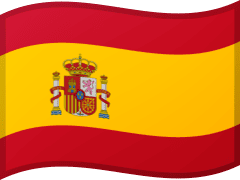
- Asociación Herpetológica Española


- Sosanfibios.org es un proyecto de la Asociación Herpetológica Española para luchar contra las enfermedades emergentes de los anfibios
- Asociación Herpetológica Granadina

- Asociación Herpetológica Timon es una sociedad sin ánimo de lucro, integrada principalmente por gente joven con interés en el estudio y conservación de la naturaleza, con especial énfasis en anfibios y reptiles de la Comunidad Valenciana.
- Proyecto Sierra de Baza
 es una asociación sin ánimo de lucro, nacida para la promoción y defensa de la Sierra de Baza, como medio físico, biológico y humano, dentro de un desarrollo sostenible.
es una asociación sin ánimo de lucro, nacida para la promoción y defensa de la Sierra de Baza, como medio físico, biológico y humano, dentro de un desarrollo sostenible.
Netherlands 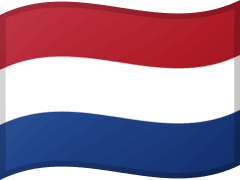
- RAVON.nl



 ist eine wissenschaftliche Organisation, die sich auf die Untersuchung und den Schutz von Amphibien, Reptilien und Fischen in den Niederlanden fokusiert.
ist eine wissenschaftliche Organisation, die sich auf die Untersuchung und den Schutz von Amphibien, Reptilien und Fischen in den Niederlanden fokusiert. - Lacerta vormt in Nederland al vanaf 1942 een middelpunt waar kennis is gebundeld over voeding, huisvesting, natuurlijk gedrag en kweek van slangen, hagedissen, schildpadden, kikkers en salamanders in de vorm van artikelen over waarnemingen in de natuur en in het terrarium.
Belgium 
- Belgian Herpetological Society

- Natagora



 a pour but de protéger la nature, plus particulièrement en Wallonie et à Bruxelles.
a pour but de protéger la nature, plus particulièrement en Wallonie et à Bruxelles.
- GoodPlanet


 inspire et encourage toutes les générations à vivre durablement. Pour une planète saine, pour tous, pour aujourd’hui et demain. Pour une GoodPlanet.
inspire et encourage toutes les générations à vivre durablement. Pour une planète saine, pour tous, pour aujourd’hui et demain. Pour une GoodPlanet.
Luxembourg 
- Emwelt.lu
 ist eine Webseite, die vom Ministerium für Umwelt, Klima und nachhaltige Entwicklung, der Umweltverwaltung und der Verwaltung für Natur und Wälder des Großherzogtums Luxemburg herausgegeben wird.
ist eine Webseite, die vom Ministerium für Umwelt, Klima und nachhaltige Entwicklung, der Umweltverwaltung und der Verwaltung für Natur und Wälder des Großherzogtums Luxemburg herausgegeben wird. - SICONA
 ist in über 40 Gemeinden im Süden und Zentrum Luxemburgs aktiv. Seit vielen Jahren setzt sich das Naturschutzsyndikat SICONA zusammen mit seinen Mitgliedsgemeinden konsequent für den Kammmolchschutz ein.
ist in über 40 Gemeinden im Süden und Zentrum Luxemburgs aktiv. Seit vielen Jahren setzt sich das Naturschutzsyndikat SICONA zusammen mit seinen Mitgliedsgemeinden konsequent für den Kammmolchschutz ein. - naturemwelt.lu



 hat 11.000 Mitglieder die in lokale oder thematische Vereinigungen aufgeteilt sind. Diese Mitgliedsvereinigungen organisieren eigenständig Aktivitäten, wie Exkursionen oder Naturschutzarbeiten in ihrer Region. Viele Freiwillige engagieren sich in unseren Mitgliedsvereinigungen aktiv für den Naturschutz.
hat 11.000 Mitglieder die in lokale oder thematische Vereinigungen aufgeteilt sind. Diese Mitgliedsvereinigungen organisieren eigenständig Aktivitäten, wie Exkursionen oder Naturschutzarbeiten in ihrer Region. Viele Freiwillige engagieren sich in unseren Mitgliedsvereinigungen aktiv für den Naturschutz.
United Kingdom 
- Froglife




 is a national wildlife conservation charity concerned with the conservation of the UK’s amphibian and reptile species and their associated habitats.
is a national wildlife conservation charity concerned with the conservation of the UK’s amphibian and reptile species and their associated habitats. - The Amphibian and Reptile Conservation Trust




- Amphibian and Reptile Groups of the UK (ARG UK)

 promotes the conservation of our native amphibians and reptiles and their environment by promoting and supporting the development of a network of independent Amphibian and Reptile Groups (ARGs).
promotes the conservation of our native amphibians and reptiles and their environment by promoting and supporting the development of a network of independent Amphibian and Reptile Groups (ARGs). - Overseas Territories Conservation


 exists to promote the co-ordinated conservation of the diverse and increasingly threatened plant and animal species and natural ecosystems across all of UK’s Overseas Territories (UKOTs) and Crown Dependencies (CDs).
exists to promote the co-ordinated conservation of the diverse and increasingly threatened plant and animal species and natural ecosystems across all of UK’s Overseas Territories (UKOTs) and Crown Dependencies (CDs).
- Staying Connected for Conservation in a Changed World: UKOTCF Online conference 2021
- British Herpetological Society

 is one of the most prestigious such societies of its kind in the world.
is one of the most prestigious such societies of its kind in the world.
- The society’s Herpetological Journal is ranked as one of the leading scientific publications devoted to herpetology.
- British Wildlife

 has established its position as the leading natural history magazine in the UK, providing essential reading for both enthusiast and professional naturalists and wildlife conservationists.
has established its position as the leading natural history magazine in the UK, providing essential reading for both enthusiast and professional naturalists and wildlife conservationists. - British Naturalists’ Association
 is the national body for naturalists, founded in 1905.
is the national body for naturalists, founded in 1905. - Freshwater Habitats Trust

 ’s aim is to protect freshwater life for everyone to enjoy.
’s aim is to protect freshwater life for everyone to enjoy.
- iSpot
 — Add your observation, the community helps identify it.
— Add your observation, the community helps identify it. - iRecord a site for managing and sharing your wildlife records.
- Wildfowl & Wetlands Trust



 is the UK’s leading wetland conservation charity
is the UK’s leading wetland conservation charity - The Woodland Trust



 is a charity for Trees, woods and wildlife.
is a charity for Trees, woods and wildlife.
- The Wildlife Trusts




 is a movement made up of 46 Wildlife Trusts: independent charities with a shared mission.
is a movement made up of 46 Wildlife Trusts: independent charities with a shared mission.
- -> Find your closest Wildlife Trust
- Alderney Wildlife Trust




- Avon Wildlife Trust, Berks, Bucks and Oxon Wildlife Trust





- Cheshire Wildlife Trust




- Cornwall Wildlife Trust




- Cumbria Wildlife Trust





- Derbyshire Wildlife Trust





- Devon Wildlife Trust




- Durham Wildlife Trust




- Essex Wildlife Trust




- Gloucestershire Wildlife Trust




- Gwent Wildlife Trust




- Hampshire & Isle of Wight Wildlife Trust





- Herefordshire Wildlife Trust



- Herts and Middlesex Wildlife Trust




- Kent Wildlife Trust



- Lancashire Wildlife Trust




- Leicestershire & Rutland Wildlife Trust





- Lincolnshire Wildlife Trust





- London Wildlife Trust




- Manx Wildlife Trust



- Montgomeryshire Wildlife Trust





- Norfolk Wildlife Trust




- North Wales Wildlife Trust




- Northumberland Wildlife Trust




- Nottinghamshire Wildlife Trust





- Radnorshire Wildlife Trust




- Scottish Wildlife Trust





- Sheffield and Rotherham Wildlife Trust




- Shropshire Wildlife Trust




- Somerset Wildlife Trust





- Staffordshire Wildlife Trust





- Suffolk Wildlife Trust




- Surrey Wildlife Trust





- Sussex Wildlife Trust


- Tees Valley Wildlife Trust





- The Isles of Scilly Wildlife Trust




- The Wildlife Trust for Bedfordshire, Cambridgeshire and Northamptonshire





- The Wildlife Trust for Birmingham and the Black Country




- The Wildlife Trust of South and West Wales




- Ulster Wildlife




- Warwickshire Wildlife Trust





- Wiltshire Wildlife Trust




- Worcestershire Wildlife Trust




- Yorkshire Wildlife Trust



Ireland 
- The Irish Peatland Conservation Council (IPCC)



 is best known for the save the bogs campaign in Ireland. Taking action for bogs and wildlife is what we do.
is best known for the save the bogs campaign in Ireland. Taking action for bogs and wildlife is what we do.
- Every year IPCC needs the help of people all over Ireland to take part in the National Frog Survey Ireland. Please record where frogs, spawn and tadpoles occur in the Hop to It Irish Frog Survey.
- The Herpetological Society of Ireland
 is a voluntary organisation dedicated to advancement of herpetology in Ireland through education, outreach, and citizen science.
is a voluntary organisation dedicated to advancement of herpetology in Ireland through education, outreach, and citizen science. - The Irish Wildlife Trust (IWT)


 aims to conserve wildlife and the habitats they depend on throughout Ireland while encouraging a greater understanding and appreciation of the natural world and the need to protect it. The Irish Wildlife Trust was founded in 1979 as a non-governmental organisation and charity.
aims to conserve wildlife and the habitats they depend on throughout Ireland while encouraging a greater understanding and appreciation of the natural world and the need to protect it. The Irish Wildlife Trust was founded in 1979 as a non-governmental organisation and charity.
- The Irish Wildlife Trust has branches around Ireland who organise events and conservation activities in their County.
Slovenia 
Serbia 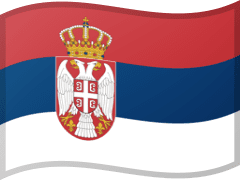
Denmark 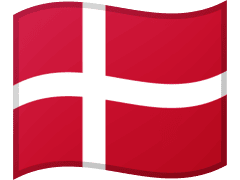
- Miljøstyrelsen (Ministry of Environment of Denmark)




- Danmarks Naturfredningsforening




 (The Danish Society for Nature Conservation is Denmark’s largest nature organization with 130,000 members and over 1,500 volunteers.)
(The Danish Society for Nature Conservation is Denmark’s largest nature organization with 130,000 members and over 1,500 volunteers.)
- Herp Spot is a private website about field herpetology in Denmark.
Norway 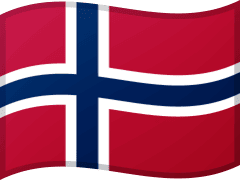
- Norsk Herpetologisk Forening (NHF)
 er en interesseforening for alle som er interessert i reptiler og amfibier.
er en interesseforening for alle som er interessert i reptiler og amfibier. - Norwegian Biodiversity Information Centre (NBIC)


 was established by a parliamentary resolution and became operational in 2005.
was established by a parliamentary resolution and became operational in 2005. - Naturvernforbundet

 (The Norwegian Society for Nature Conservation consists of over 35,000 members divided between approximatley 100 local groups across the country, working to solve environmental issues both local and global.)
(The Norwegian Society for Nature Conservation consists of over 35,000 members divided between approximatley 100 local groups across the country, working to solve environmental issues both local and global.)
Sweden 
- Swedish Species Information Centre (SLU)


- Artfakta is a resource for those who need information on the status of species, their ecology, or identification characters for their environmental work.
- Naturskyddsföreninge


 (The Swedish Society for Nature Conservation has been Sweden’s most influential environmental organisation for decades and currently has over 200,000 members.)
(The Swedish Society for Nature Conservation has been Sweden’s most influential environmental organisation for decades and currently has over 200,000 members.)
Finland 
- Suomen herpetologinen yhdistys (SHY)
- Suomen Lajitietokeskus

 (Finlands Artdatacenter)
(Finlands Artdatacenter) - Suomen luonnonsuojeluliitto


 (The Finnish Association for Nature Conservation has over 30,000 individual members in about 160 local member associations in 15 county-based district organizations.)
(The Finnish Association for Nature Conservation has over 30,000 individual members in about 160 local member associations in 15 county-based district organizations.) - sammakkolampi.fi Suomen sammakkoeläimet ja matelijat (Private page about Finnish Amphibians and Reptiles)
- Suomen Herppiharrastajat ry
 on perustettu helmikuussa 2012. Jäsenistö koostuu erilaisten matelijoiden, sammakkoeläinten ja selkärangattomien harrastajista. (An association representing enthusiasts of exoctic amphibians and reptiles.)
on perustettu helmikuussa 2012. Jäsenistö koostuu erilaisten matelijoiden, sammakkoeläinten ja selkärangattomien harrastajista. (An association representing enthusiasts of exoctic amphibians and reptiles.) - Kyyatlas
 kerää puremiin liittyviä tietoja ja kokemuksia. (This page collects information and experiences related to snake bites.)
kerää puremiin liittyviä tietoja ja kokemuksia. (This page collects information and experiences related to snake bites.) - Kyyn rauhoittaminen (A guy who tests snake repellents.)
Romania 
- SaveTheFrogs! Romania
 isi propune sa informeze oamenii cu privire la amfibieni si necesitatea protejarii lor.
isi propune sa informeze oamenii cu privire la amfibieni si necesitatea protejarii lor.
Russia 
- Russian Journal of Herpetology
- Rus-nature.ru provides description and images of 41 amphibian species of Russia and the countries of the former USSR.
- Ecosystema.ru is a page dedicated to the problems of environmental education of schoolchildren in nature, research, etc.
- Buy identification table with amphibians and reptiles of central Russia
- Digital atlas-identifier of amphibians from Russia for Android [Google Play] [Download Link] and iOS operating systems (iPhone and iPad) [Download from AppStore]
- Герпетофауна Волжского бассейна
 (Herpetofauna of the Volga Basin)
(Herpetofauna of the Volga Basin) - ranaesc.ru provides information about Rostand’s anomaly P and other anomalies in amphibians.
Turkey 
- Turkherptil.org is the Amphibians and Reptiles Monitoring & Photography Society in Turkey.
Asia
Sultanate of Oman 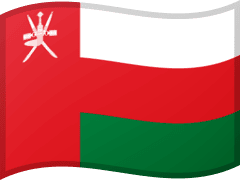
- Reptiles & Amphibians of the Hajar Mountains (PDF File)
United Arab Emirates 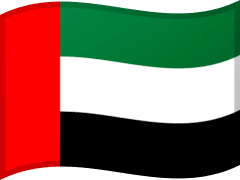
- Environment Agency Abu Dhabi, founded in 1996, regulates and enforces Abu Dhabi’s environmental laws to protect biodiversity and preserve the quality of life for a sustainable future.
- Dubai Desert Conservation Reserve (DDCR), founded in 2002, is a 225 km2 natural reserve and comprises some 5% of the Emirate of Dubai’s total landmass.
South Korea 
- 한국양서 파충류학회 (The Korean Society of Herpetologists)
- 다양성재단 (Biodiversity Foundation of South Korea), 소식지 (Newsletter)
- 국립생태원 (National Institute of Ecology)
- 아태양서파충류연구소 (Asia Pacific Amphibians Reptile Institute)
- Birds Korea’s Baekryeong Wetlands Project – and the Great Escape! (Frog ladders in South Korea)
China 
- AmphibiaChina, an online database of Chinese Amphibians
- China Herpetological Conservation Action Plan (PDF File)
- Amphibians of China, Volume 1 (€264.50)
Taiwan 
Japan 
Malaysia 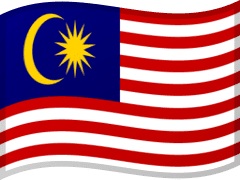
Bangladesh 
- Save The Frogs! Bangladesh
 is the first Asian branch of SAVE THE FROGS! USA
is the first Asian branch of SAVE THE FROGS! USA
India 
- Wildlife Trust of India (WTI)



 was formed in 1998 in response to the many crises confronting India’s wildlife and wild habitats.
was formed in 1998 in response to the many crises confronting India’s wildlife and wild habitats.
Africa
- Herpetological Association of Africa (HAA), founded 1965, is dedicated to the study and conservation of reptiles and amphibians of Africa.
Kenya 
- Nature Kenya

 , the East Africa Natural History Society (EANHS), is Africa’s oldest environmental Society. We were established in 1909 to promote the study and conservation of nature in eastern Africa.
, the East Africa Natural History Society (EANHS), is Africa’s oldest environmental Society. We were established in 1909 to promote the study and conservation of nature in eastern Africa.
- Amphibians of Kenya (free PDF book in English)
- Guide to the reptiles and amphibians of the Maasai Mara (free PDF book in English)
- Atlas Poster: Frogs of Kenya (PPTX File) or Download as PDF
- The Kenya Wildlife Service (KWS)


 conserves and manages Kenya’s wildlife for the Kenyan people and the world.
conserves and manages Kenya’s wildlife for the Kenyan people and the world.
Ghana 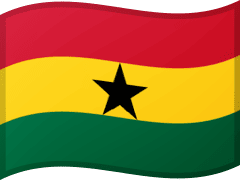
- Save The Frogs! Ghana



 is West Africa’s first nonprofit organization dedicated exclusively to amphibian conservation. The mission of Save Ghana Frogs is to protect Ghana’s amphibian populations and to promote a society that respects and appreciates nature and wildlife.
is West Africa’s first nonprofit organization dedicated exclusively to amphibian conservation. The mission of Save Ghana Frogs is to protect Ghana’s amphibian populations and to promote a society that respects and appreciates nature and wildlife.
South Africa 
- African Amphibian Conservation Research Group (AACRG)
 was established in 2002 to address the deficiencies in conservation research of southern African amphibians.
was established in 2002 to address the deficiencies in conservation research of southern African amphibians. - Endangered Wildlife Trust (EWT)


 focus on saving species, saving habitats and benefiting people.
focus on saving species, saving habitats and benefiting people.
- In 2012 EWT initiated the Threatened Amphibian Programme (TAP).
- FrogMAP is a citizen science project which aims to determine the distribution and conservation priorities of frogs on the African continent. FrogMAP is building the 21st century distribution maps for Africa’s Amphibians.
- The South African National Biodiversity Institute (SANBI)




 contributes to South Africa’s sustainable development by facilitating access to biodiversity data, generating information and knowledge, building capacity, providing policy advice, showcasing and conserving biodiversity in its national botanical and zoological gardens.
contributes to South Africa’s sustainable development by facilitating access to biodiversity data, generating information and knowledge, building capacity, providing policy advice, showcasing and conserving biodiversity in its national botanical and zoological gardens.
Australia and Oceania
Australia 
- The Frog Research Team

 studies Australian frogs, their distributions and habitat use, their community and population dynamics, their ecology, their infection and disease dynamics, their biology, and their immunology. One of their main concerns is the chytridiomycosis.
studies Australian frogs, their distributions and habitat use, their community and population dynamics, their ecology, their infection and disease dynamics, their biology, and their immunology. One of their main concerns is the chytridiomycosis. - Amphibian Research Centre (ARC) was established as a centre dedicated to research and conservation of Australia’s unique frogs. They provide expertise in all areas of frog knowledge including captive breeding and research and education.
- Australian Herpetological Society (AHS) was founded as the Australian Reptile Club, in 1949 and was the first natural history society in Australia devoted specifically to herpetology.
- Australian Governement Department of agriculture, water and the environment
- FrogID is a national citizen science project that is helping us learn more about what is happening to Australia’s frogs.
- Taronga‘s insurance colony is a lifeline for the Corroboree Frog, one of Australia’s most critically endangered species.
- Australian reptiles lists by families
- Australian Reptile Online Database (AROD) is a searchable database containing information on all currently recognised Australian reptile species.
Western Australia - Kimberley Specialists fight against the spread of invasive cane toads.
Northern Territory - Frogwatch
South Australia - FrogWatch SA fills a gap left by previous citizen science frog survey programs. It uses new technologies, is community driven and covers as much of South Australia as possible throughout the year.
Queensland - Frog Decline Reversal Project is a project that exists to reverse the downward spiral of frog populations in Cairns and enhance regional frog populations through education and increased awareness of the environment. The main focus of the Project is the running of the country’s only frog hospital. Starting out by simply rescuing injured frogs and learning recovery techniques to save individuals which would ordinarily have died in the wild.
- Our site is metamorphing! Our new name is Frog Safe.
- Queensland Frog Society is based in South East Queensland, Australia.
- RANA Frog Group objectives are: funding research, public education and repopulation. RANA encourages members and the community at large to establish ponds and suitable environments in their own garden.
- Tablelands Frog Club
- Cape York Herpetological Society is a group of diverse people being active in the northern part of Queensland.
New South Wales - Frog And Tadpole Study Group of NSW (FATS) conducts various community and conservation activities to assist frogs. These include holding information stalls at community environment fairs, presenting workshops on how to make your backyard frog friendly, building frog ponds and school presentations about frogs. FATS also runs a Frog rescue program for stow-away frogs that are accidentally transported into the cities, as well as cane toad removal and awareness programs.
Victoria - Victorian Frog Group
- Frog Watch aims to involve a large number of Victorians of all ages in actively helping to increase the quality of large-scale frog habitat in Victoria
New Zealand 
- New Zealand Herpetological Society Incorporated (NZHS)
 was created in 1969 by members of the public with a shared interest in NZ and exotic herpetofauna.
was created in 1969 by members of the public with a shared interest in NZ and exotic herpetofauna. - ATLASOF THE AMPHIBIANSAND REPTILES OF NEW ZEALAND (PDF File)
North America
- salamanderfungus.org

 — North American Bsal Task Force
— North American Bsal Task Force
United Staates 
- Association of Zoos and Aquariums (AZA)




 is a non-profit organization dedicated to the advancement of zoos and aquariums in the areas of conservation, education, science, and recreation. AZA represents more than 240 facilities in the United States and overseas. Its Animal Programs and Committees are committed to protecting amphibians.
is a non-profit organization dedicated to the advancement of zoos and aquariums in the areas of conservation, education, science, and recreation. AZA represents more than 240 facilities in the United States and overseas. Its Animal Programs and Committees are committed to protecting amphibians.
- FrogWatch USA is AZA’s citizen science program by which volunteers learn about wetlands in their communities and contribute data on the calls of local frogs and toads to a national dataset.
- AZA Amphibian Taxon Advisory Group (ATAG) is comprised of peer-elected representatives from across North America. The ATAG steering committee provides direction to AZA members for collective amphibian conservation through the ATAG Regional Collection Plan (RCP). The ATAG RCP prioritizes North American species identified for immediate conservation action through a global prioritization process (IUCN/AArk). Two of ATAG’s primary goals are to expand capacity for species in peril and provide husbandry training/resources for future amphibian stewards.
- Action Plan for Ex Situ Amphibian Conservation in the AZA Community (PDF file)
- Help the Hellbender




- The Foundation for the Conservation of Salamanders


 is a non-profit organization working to connect sustainable practices with salamander conservation, education and research support.
is a non-profit organization working to connect sustainable practices with salamander conservation, education and research support. - The Amphibian Foundation is dedicated to connecting individuals, communities and organizations in order to create and implement lasting solutions to the global amphibian extinction crisis. Established in 2016 by Mark and Crystal Mandica, we collaborate with partners in the fight against amphibian extinction.
- U.S. Fish and Wildlife Service




 is the premier government agency dedicated to the conservation, protection, and enhancement of fish, wildlife and plants, and their habitats.
is the premier government agency dedicated to the conservation, protection, and enhancement of fish, wildlife and plants, and their habitats. - Amphibians of The United States (iNaturalist.org)
- The National Wildlife Federation




 is America’s largest and most trusted conservation organization, works across the country to unite Americans from all walks of life in giving wildlife a voice. We’ve been on the front lines for wildlife since 1936, fighting for the conservation values that are woven into the fabric of our nation’s collective heritage.
is America’s largest and most trusted conservation organization, works across the country to unite Americans from all walks of life in giving wildlife a voice. We’ve been on the front lines for wildlife since 1936, fighting for the conservation values that are woven into the fabric of our nation’s collective heritage.
- Refrogging-America — The National Wildlife Federation has partnered with Save The Frogs to encourage creating habitat for California amphibians.
Canada 
- Canadian Herpetological Society (CHS)
 is a registered Canadian charity that advances reptile and amphibian research and conservation in Canada.
is a registered Canadian charity that advances reptile and amphibian research and conservation in Canada.
- Atlas of Amphibians and Reptiles of Quebec
- Save The Salamanders

 mission is to help contribute to the conservation of salamanders to ensure their continuing survival, through outreach education efforts and by raising awareness. Save The Salamanders aims to educate individuals of all ages and all walks of life by utilizing several platforms. These include media appearances, awareness campaigns, social networking, the distribution of informative fact sheets, and by presenting educational workshops, lectures, and displays.
mission is to help contribute to the conservation of salamanders to ensure their continuing survival, through outreach education efforts and by raising awareness. Save The Salamanders aims to educate individuals of all ages and all walks of life by utilizing several platforms. These include media appearances, awareness campaigns, social networking, the distribution of informative fact sheets, and by presenting educational workshops, lectures, and displays. - Amphibians of Canada (iNaturalist.org)
Mexico 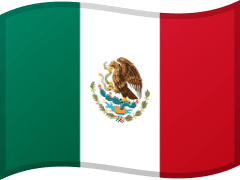
- Sociedad Herpetológica Mexicana


 , es una organización sin fines de lucro en la que coinciden profesores, investigadores, estudiantes y público en general, que tengan interés en el conocimiento y conservación de los anfibios y reptiles mexicanos y latinoamericanos.
, es una organización sin fines de lucro en la que coinciden profesores, investigadores, estudiantes y público en general, que tengan interés en el conocimiento y conservación de los anfibios y reptiles mexicanos y latinoamericanos.
- Amphibian and Reptile Atlas of Peninsular California

 is a binational effort to understand the biodiversity of amphibians and reptiles from Southern California and Baja California using both museum collection data and observations from citizen scientists.
is a binational effort to understand the biodiversity of amphibians and reptiles from Southern California and Baja California using both museum collection data and observations from citizen scientists. - Red para la Conservación de los Anfibios y Reptiles de Yucatán (RCARY)

- Salva a las Ranas
 , Nayarit, toda la información sobre ranas, sapos y salamandras de Nayarit, México.
, Nayarit, toda la información sobre ranas, sapos y salamandras de Nayarit, México.
Panama 
- Proyecto de Conservación y Rescate de Anfibios de Panamá


 ‘s mission is to rescue and establish sustainable assurance colonies of amphibian species that are in extreme danger of extinction throughout Panama.
‘s mission is to rescue and establish sustainable assurance colonies of amphibian species that are in extreme danger of extinction throughout Panama.
Cuba 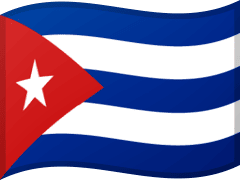
- Caribbean Herpetology is a peer-reviewed, online-only, open access journal.
- Eleutherodactylus iberia from Cuba is one of the smallest frog in the world. A photo from the iNaturalist.org database.
- Carteles de los anfibios y reptiles de cuba (PDF file)
- Guía Taxonómica de los anfibios de Cuba (PDF file)
South America
- Revista Lationoamericana de Herpetología es una revista científica de libre, publicada dos veces al año (mayo y noviembre) por el consorcio de sociedades/asociaciones de herpetología.
Brazil 
- Sociedade Brasileira de Herpetologia was founded in 1984.
Bolivia 
- Plan de acción para la conservación de los anfibios amenazados de Bolivia (PDF File)
- Anfibios de la Amazonía Boliviana (iNaturalist guide)
- Anfibios de Bolivia – Amphibians of Bolivia

Peru 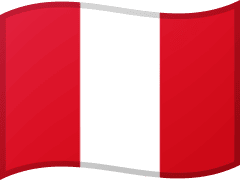
- El Grupo RANA




 es una organización sin fines de lucro comprometida con la naturaleza y la sociedad, trabajando por la conservación de la biodiversidad y los ecosistemas.
es una organización sin fines de lucro comprometida con la naturaleza y la sociedad, trabajando por la conservación de la biodiversidad y los ecosistemas.
Ecuador 
- El Centro Jambatu de Investigación y Conservación de Anfibios




 es parte de la Fundación Jambatu para la conservación de los anfibios de Ecuador.
es parte de la Fundación Jambatu para la conservación de los anfibios de Ecuador. - BIOWEB Ecuador es una herramienta para descubrir, administrar y publicar información sobre la diversidad Biológica del Ecuador.
Paraguay 
- Asociación Paraguaya de Herpetología (APAH)

 es una institución de la sociedad civil sin ánimo de lucro, consolidada recientemente en el año 2010
es una institución de la sociedad civil sin ánimo de lucro, consolidada recientemente en el año 2010
Columbia 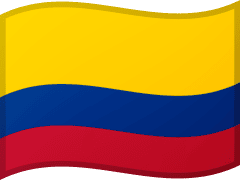
- Asociación Colombiana de Herpetología (ACHerpetología) es una sociedad académica sin ánimo de lucro constituida en el 2006 para reunir a todas aquellas personas cuyas actividades científicas, profesionales, técnicas y educativas están relacionadas con el estudio de los anfibios y reptiles.
- Save The Frogs Colombia

Chile 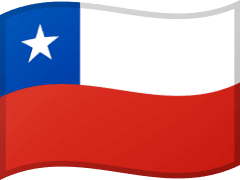
- Red Chilena de Herpetología (RECH)
 , agrupa a especialistas de diversas disciplinas del área de las Ciencias Biológicas, dedicados al estudio de diferentes tópicos relacionados con los anfibios y reptiles que habitan en nuestro país.
, agrupa a especialistas de diversas disciplinas del área de las Ciencias Biológicas, dedicados al estudio de diferentes tópicos relacionados con los anfibios y reptiles que habitan en nuestro país.
Argentinia 
- Asociación Herpetológica Argentina (AHA)


 es una sociedad científica sin ánimo de lucro que nuclea a profesionales del área de la herpetología. Nació en la ciudad de Buenos Aires el 8 de septiembre de 1982.
es una sociedad científica sin ánimo de lucro que nuclea a profesionales del área de la herpetología. Nació en la ciudad de Buenos Aires el 8 de septiembre de 1982. - Conservación de Anfibios en Agroecosistemas (COANA)




 es una iniciativa que basa su trabajo en dos ejes de acción: investigación y educación, con el objetivo de conservar la diversidad de anfibios en la Región Pampeana.
es una iniciativa que basa su trabajo en dos ejes de acción: investigación y educación, con el objetivo de conservar la diversidad de anfibios en la Región Pampeana.
- Anfibios del Gran Chaco (Poster PDF File)
- SAVE THE FROGS! Buenos Aires






